Italy
EuropeLevel of surfing
Evolved
Quality of surf
Good
Call code
39
Net code
it
Area
301318
Coastline
7,600 km
Climate
Predominantly Mediterranean; Alpine in far north; hot, dry in south
Hazards
None
Best Months
October - December
Population
59206382
Currency
Euro (EUR)
Time Zone
CET (UTC+1) DST CEST (UTC+2)
Special Requirements
Private Beaches
introduction
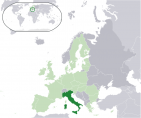
Quizimodo: Location map: Italy (dark green) / European Union (light green) / Europe (dark grey); inspired by and consistent with general country locator maps by User: Vardionl; 17 June 2007
Italy is a country in southern Europe. Italy comprises a boot-shaped peninsula and two large islands in the Mediterranean Sea, Sicily and Sardinia. Italy shares its northern alpine boundary with France, Switzerland, Austria and Slovenia.
The independent countries of San Marino and the Vatican City (Holy See) are enclaves within Italian territory. The capital of Italy is Rome.
history
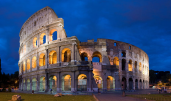
Diliff: Colosseum in Rome, Italy; April 2007
It's hard to know where to start when talking about the history of a nation that gave birth to one of the earth's greatest civilisations and is the home of the Roman Catholic church. From 2,000 B.C. the tribes of Italy began engaging in the trade that was to earmark the country’s history (one of those were the Celts, Sicani, Ligurians, Umbrians, Sabines, and Campanians). By the 7th century BC, Greek traders were settling in the south, the Estruscans were forming their own society and a little town called Rome was quickly growing.
The Roman republic was founded in 509B.C., and came to great prominence with its concept of coherent laws, city planning, engineering, and centralized government. The Romans were powerful fighters and became masters of Europe from Scotland to Iraq to Egypt to Morocco. A consul by the name of Gaius Julius Caesar took power in Rome in 59 BC and spent the majority of his reign attempting to conquer Gaul (now modern day France). He was assassinated in 44 BC and after his death was the ascension of a new leader, Octavian, who was bestowed with the moniker Augustus. Augustus was followed in Roman rule by legendary names like Caligula, Claudius, Marcus Aurelius and Commodus.
The Roman Empire packed in 1.5 million citizens and led the ancient world as an advanced and egalitarian society. Rome's advances in government, culture, architecture and plumbing cemented its position as the ancient world's most influential society.
And once again Italy was at the forefront of new ideas during the period of the Renaissance. World's history has capturesd the names of Donatello, Raphael, Leonardo da Vinci and Michelangelo (who at that time painted the ceiling of the Sistine Chapel).
In the 1850s, after the reign of fascist dictator Benito Mussolini, the establishment of a united Italian nation began. An Italian Republic was established in 1946, but the country's first government couldn't take control of the country until 1948. From this time forward, Italy managed to transformed into a modern nation and at the same time to maintaine those traditions that have served it so well over the years.
Nowadays Italy is a vibrantly democratic country, led by Prime Minister Silivio Berlusconi.
surfing
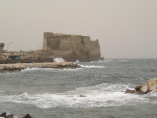
Mfrasca: Castel Dell Ovo, Naples; 2005
Italy is probably one of the most unique cultural surfing destinations you will ever encounter. Where else could you surf in full view of a 2000 year old Roman amphitheatre.
The main timings for the sirocco and mistral swells and winds are in the Northern Hemisphere Autumn and Spring (March and November) This would probably be the best time to plan your Mediterranean surf trip, though sitting this far east in the sea will give you the best chance of catching any swell generated from favourable weather systems.
Another source of swell is the storm cells of the North Atlantic. Many of these cells descend along the Irish coastline and then outwards along the Atlantic Coast. Occasionally certain cells in Winter (Dec-Jan) can sweep across southern Spain and into the Med. This is a rare but notable event that can send swell hurtling in a 360 degree radius, lighting up points and reefs that see rideable surfing options maybe once or twice per year.
ADRIATIC SEA
Surf in the Adriatic is a very fickle thing indeed. What is required is a major weather system to drill around at the entrance of the Adriatic around Albania to send anything resembling swell up into the northern reaches. Last stop of any swell in the Adriatic is the shoreline of Northern Italy. Don't bother checking unless the mother of all storms has been stirring the pot for a few days becasue it is very rare to have swell pushing this far inland. To put it in perspective, if you catch a wave here you are around 2000 kilometres from the nearest ocean - cool huh? Try the rivermouths and sandbars around Grado when it all comes together.
travel
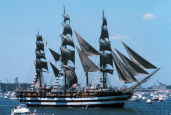
Amerigo vespucci 1976 nyc aufgetakelt; 1976
The geoghraphy of the country makes it possible to use all means of tranportation to get into the country. Going by plane would be the fastest one, and you can arrive to Rome, Milan, Bologna, Pisa, Naples, Turin and Venice. Italy has its own national airline, Alitalia, as well as several smaller carriers, such as Meridiana. Another good thing is that you save money on the flights as there are 406 budget routes flown from and within Italy by low cost airlines.
Train is another comfortable option to travel, especially that you can catch it from all the neighbouring countries (France, Switzerland, Austria, etc) and also from Munich, Prague, Budapest, Ljubljana, Barcelona.
If you travel by car, you can freely go from France and Austrlia as their boarders are open (though don't be surprised if you are stopped for a random check), Switzerland is not part of the Schengen zone, so full border checks apply.
You can take a boat from Greece, Montenegro, Albania and Croatia, with most of them arriving to Venice, Ancona, Bari and Brindisi.
And, of course, bus tours from pretty much all European countries are available as well.
where to stay
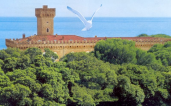
Silbertanne3: Castiglioncello; 13 January 2007
It won't be a problem to find an accomodation in Italy (especially in major cities and main tourist areas) no matter what budget you have. Camping would be the cheapest option, but not the worst one as all the camping sites are well managed. Just make sure you book in advance, especially in summer. And another good advice: try staying at a farm, it is very popular in Italy, especially in the rural areas, such as Tuscany, Piedmont, Umbria, Abruzzo, Sardinia and Apulia. And you will be pleased with the tasty and healthy food, beautiful nature and relatively cheap way of living.
There are simple bed & breakfasts, as well as room rentals (though hostels are quite rare) and luxirious world-famous hotels for those who demand some extra comfort.
what to pack
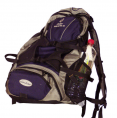
Ligar: Rucksack; 19 September 2005
Going in winter will require appropriate clothing. A small backpack makes a good carryon bag and will be useful in daily life. There are round-prong outlets in Europe, so depending on where you are travelling from, you may need an adaptor. Pair of comfortable walking shoes will be great for sightseeing. Beach clothing & sandals will be useful if you are going to the seaside and in the warm season. Try to choose classics, and items that you can mix and match. Have at least one set of nicer clothing for going “clubbing”.
If you plan on visiting churches in Italy (incl. The Vatican), you will need “modest” clothing. Pack a shirt/blouse with sleeves (no bare shoulders), and either long trousers or a long skirt (longer than knee length). Also take a scarf in case you are required to cover your hair.
Yes, and set of dress clothing & shoes for more formal occasions (nice restaurant for dinner, opera, etc), unless you are certain you won’t need dress clothing.
The story with the medicines is pretty much the same as in all European countries. Better take your medicines with you, though you will still be able to by them on the spot. Just keep in mind that the brands can be unfamiliar and cost more. By the way, getting a trip medical insurance would be a good idea.
dangers and warnings
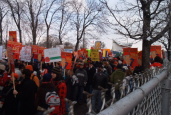
Sepper: Student strike in Montreal; 16 March 2005
Italy has a very low crime rate; use your common sense and you will be fine wherever you go.
The only problem that happens to women who travel alone is the extra attention from the men. The solution is very simple - completely ignore the attention. That’s the thing that works best.
You will need to have an IDP (International Driving Permit) if you plan to drive in Italy. An IDP is the proof that you hold a valid driver’s license (DL) in your own country. It's also a translation of your DL into 10 different languages, including the 5 official UN ones.
When buying purchasing goods in Italy, always ask for a receipt.
This is a serious matter; when a receipt is not presented, both seller and buyer equally share a hefty fine.
Tickets for public transportation in Italy have to be time stamped either upon or before boarding. Riding the train or bus without a validated ticket will land you a hefty fine, so don’t risk it. When the machine doesn’t function properly, immediately upon boarding, write clearly on the back of the ticket the date, time, and the departure and destination points. If the ticket is for a bus, the driver will write all the info on the ticket for you.
Strikes are a fact of life in Italy, no other country has so many strikes. So, to ensure an uninterrupted trip, travellers to and within Italy should check for upcoming strikes (TV, newspapers, Internet) and work around the dates. If it's impossible to reschedule, one should be prepared for the inevitable delays and inconveniences.
Yes, and don’t forget to drink enough water when you travel in summer to prevent your body from drying out.
restaurants, shopping and nightlife

Niels Elgaard Larsen: Limoncello; 2005
The first thing that comes to your head when talk about italisn cuisine is...of course, PIZZA! But, as in Italy cuisine is a kind of art (great chefs as Gualtiero Marchesi or Gianfranco Vissani are considered half way between TV stars and magician), don't rush to order familiar pasta or pizza (usually Italians don't like foreigners who ask for this very typical food), go through the menu and use your chance to try something more sophisticated and new, or get closer to the centuries-old traditions of Italian cuisine. By the way, note that breakfast in Italy is usually quite small, but you will certainly catch up on lunch (seen as the most important part of the day) and dinner. And just a few names of specialities that you shouldn't miss: Risotto, Polenta, Arancini, Tiramisu and Gelato.
restaurants, shopping and nightlife
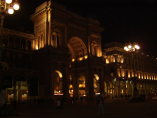
Galleria Vittorio Emanuele, the mother of all shopping malls (from wikitravel.org)
Now, shopping…as you know Italy is a great place for this as well, though it’s quite an expensive one, so prepare your Euros (Italy is part of the Eurozone)! There will be no problems with the credit cards in the main cities, but it’s better to have cash if you travel through countryside or rural areas.
Italian fashion is renowned worldwide and many of the world's most famous international brands have their headquarters in Italy. So if you plan to do some fashion shopping, better go to Milan and Rome, the two main places for high-class shopping. Via della Spiga and Via Montenapoleone (and surroundings) in Milan and via Condotti in Rome are the key areas for high-class shopping, but you'll find flagship stores in almost every major city.
If your budget is quite tight, then choose the sale season, you can really get a bargain, though it is quite a mad time, as you won’t be the only one there.
Yes, and if you you're a non-EU (European Union) resident, you are entitled to a VAT refund (usually it is 20%, but varies depending on the product) on purchases of goods that will be exported out of the EU. So pay attention to the shops that have a Tax Free sticker outside.
And nightlife…if that’s a part of your plan, than go tho the major cities and you won’t get disappointed. Rome is not only a centre of culture in Europe, but also a city with many clubs and bars. Rome is alive at night; it is a party that never ends. Clubs don't get going there until after midnight. Thursdays through Sundays are club nights when the whole city seems to be out on the town. Monday through Wednesday the streets are much quieter.
Alpheus is one of the most spacious clubs in Rome (house reigns in the main sala; while smaller rooms:blast techno, hip hop and rhythm ‘n’ blues).
Akab is one of the largest and most established clubs on Via di Monte Testaccio, Rome's night-life row, a street with wall to wall clubs.
Baja is a two-story disco, quite unique in Rome, as it rises on a barge floating on the Tiber River. Because the focus on cocktails, Baja is very bar-oriented, its dance floor sharing space with tables.
what to do when it's flat

Solitude: Small canal – Venice; 23 September 2004
If it is flat and you are Italy, you are in a right place anyway. It is one of the cultural centre, and there are so many historical places that you simply have to see. Starting with the museums: Roman Civilization Museum in Rome; Egyptian Museum, National Cinema Museum and Automobile Museum in Turin; Science and Technology Museum in Milan; the Aquarium in Genoa (one of the largest and most beautiful in the world!); and finally, Uffizi Museum in Florence (one of the greatest museums in the world, better book tickets in advance).
Also take you chance to explore Venice and some beautiful islands, such as Sardinia, Sicily, Capri, Ischia, etc.
useful phrase guide

Dr. Marcus Gossler: A multi-volume Latin dictionary (Egidio Forcellini: Totius Latinitatis Lexicon, 1858-87) in a table in the main reading room of the University Library of Graz. Picture taken and uploaded on 15 Dec 2005 by Dr. Marcus Gossler.
Salve – Hello
Ciao – Hi
Buongiorno - Good morning
Buonanotte - Good night
Buonasera - Good night
Arrivederci - Good bye
A presto - See you soon
Si – Yes
No – no
Per piacere / Per favore – Please
(Mille) grazie – Thank you (very much)
Mi scusi – Excuse me
Mi spiace, ma... - I'm sorry, but...
Posso... ? – May I…?
Buona giornata! – Have a nice day!
Io non lo so – I don’t know
Con piacere – With pleasure
Che tipi di sandwhich ha? - What types of sandwiches do you have?
Che gusti ha? - What flavours do you have?
Che cosa mi consiglia? - What do you recommend?
Ha un tavolo per sei? - Do you have a table for six?
Vorrei un tavolo vicino la finestra. - I would like a table near to the window.
Ho prenotato un tavolo a nome di Johonson. - I have a table reserved in the name Johnson.
Vorrei vedere il menu, per favore. - I would like to see the menu, please.
Vorrei ordinare ora. - I would like to order now.
Vorrei una bistecca per secondo. - For the main course, I would like steak.
Questo non è ciò che ho ordinato. - That's not what I ordered.
Cameriere - Waiter!
Posso avere il conto, per favore? - Could I have the bill, please.
Credo che ci sia un errore nel conto. - I think there is a mistake in the bill.
Il servizio è incluso? - Is service included?
Dov'è la stazione più vicina? - Where's the nearest railway station?
Quando arriva lì? - When does it arrive there?
Quando parte il prossimo treno per Milano? - When does the next train for Milan leave?
Un bigietto di sola andata per Napoli. - A single ticket for Napoli, please.
Un biglietto di andata e ritorno per Venezia. - A return ticket for Venice, please.
Dov'è il duty free? - Where is the duty free shop?
Non mi sento bene. - I feel unwell.
Ho mal di testa. - I have a headache.
Ho mal di stomaco. - I have stomach ache.
Puo' darmi qualcosa per il dolore? - Can you give me something for the pain?
Quanto costa? - How much is it?
Lo posso provare addosso? - Can I try it on?
Lo/li prendo. - I'll take it/them.
Lo avete in un colore diverso? - Do you have it in a different colour?






